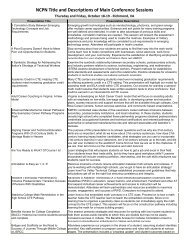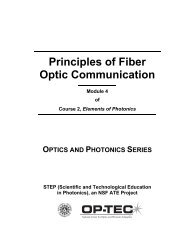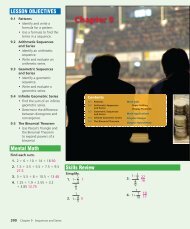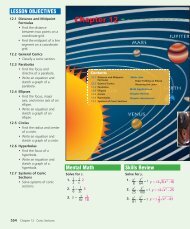Chapter 10 - NCPN
Chapter 10 - NCPN
Chapter 10 - NCPN
Create successful ePaper yourself
Turn your PDF publications into a flip-book with our unique Google optimized e-Paper software.
Practice and Problem Solving<br />
Use a double-angle or half-angle identity to find the exact value<br />
of each expression.<br />
5. cos 120° − 1 2<br />
6. sin 90° 1<br />
7. cos 90° 0 8. sin 240° − 3<br />
2<br />
9. tan 240° 3 <strong>10</strong>. sin 15° 2−<br />
3<br />
11. tan 15° 7− 4 3 12. sin 120°<br />
13. tan 300° − 3 14. cos 15°<br />
15. tan 120° − 3 16. sin 60°<br />
2<br />
3<br />
2<br />
2+<br />
3<br />
2<br />
3<br />
2<br />
17. cos 60° 1 2 18. cos 150° − 3<br />
2<br />
19. tan 60° 3 20. sin 22.5°<br />
2−<br />
2<br />
2<br />
21. cos 600° − 1 2 22. tan 22.5° 3−<br />
2 2<br />
23. cos 240° − 1 2<br />
24. cos 22.5°<br />
2+<br />
2<br />
2<br />
25. Find cos 2θ if cos θ = − 2 5 and 90° < θ < 180°. − 17<br />
25<br />
26. Find cos θ if sin θ = − 24<br />
25 and 180° < θ < 270°. − 7<br />
27. Find tan<br />
2 θ if cos θ = 4 5 and 270° < θ < 360°. 1 3<br />
25<br />
28. Find sin θ 2 if cos θ = 1 2 and 0° < θ < 90°. 1 2<br />
29. The sound waves generated by a vibrating tuning fork<br />
can be modeled by the function y = 2sin θ. If the<br />
tuning fork vibrates twice as fast, the sound<br />
will be one octave higher. This is given by<br />
the function y = 2sin 2θ. Write the<br />
function in terms of θ to model the<br />
higher octave sound waves. y = 4 sin θ cos θ<br />
30. How could the identity for cos A 2 be<br />
derived from the identity for cos 2A<br />
Show your work. see margin<br />
<strong>10</strong>.8 Double-Angle and Half-Angle Identities 483











